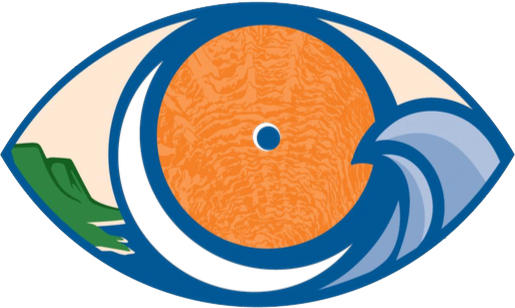.gif) 10 Tips for Learning CHamoru
10 Tips for Learning CHamoru
These guidelines for learning CHamoru have been generated by a broad public conversation among learners of the CHamoru language; including surveys, focus groups, interviews, family discussions and literature reviews.
The process was lead by Dr. Gerhard Schwab and Dr. Michael Bevacqua.
The main community informants were Marie Auyong, Joseph Capulong, Kayleen Concepcion, Dr. Lisa Baza Cruz, Kevin Delgado, Janalynne Esperon, Kin Guerrero, Magdalena Guerrero, Jessica Iglesias, Trini MacDuff, Madeline Martinez, Noel Martinez, Jaydene Molinos, Nichole Quintanilla, Desiree Ramos, Kyle Rapolla, Kalani Reyes, Natividad Rosario, Aaron Santos, Martha Sudo, and Anicia Taisipic.
The supporting organizations were Humanities Guåhan, Commission on CHamoru Language, University of Guam.
LEARN TOGETHER WITH OTHERS
Language is inherently social. The purpose of learning any language is being able to interact with other people. We cannot learn CHamoru alone; we need each other to learn CHamoru.
The more you attend to the social aspects of a language, the faster you will likely learn it. The social aspect of language doesn’t just mean being around people, it means being able to practice with others, hear others and find ways to correct yourself and grow through those interactions. Seek other people who also want to learn CHamoru, invite and encourage others to learn CHamoru with you. Ask each other and explore how you can support and help each other to practice and to learn CHamoru. Be patient with each other, respect each other, affirm and encourage each other. Appreciate and nurture relationships with people who learn CHamoru with you, you will mutually enrich each other.
KEEP GOING
Learning a language takes a long time. Almost all people who learn a second language slow down at times, take breaks, and give up because they think they cannot do it. This is normal. Struggling to learn a language does not mean you cannot learn it or will never learn it.
Expect times when you cannot keep up with how much you want to learn. Expect times when you will be confused, when you don't understand the rules and exceptions of CHamoru grammar, when you will forget what you just remembered, when you will be impatient with yourself, when you will feel you cannot do it and when you want to give up. There may even be times where the entire process feels overwhelming. Recognize these challenges as natural part of the learning process; simply keep starting again and keep going. Mistakes and difficulties are part of the process of learning CHamoru. Persevere and you will get there. The only way you can fail is if you stop trying.
LOOK FOR TEACHERS
If we can speak a language does not mean we can teach it. Teaching a language requires a particular set of knowledge and skills. For your average CHamoru speaker, it can be very difficult to explain and teach CHamoru language.
Be aware of the limitations of your teachers. Recognize the ways that they can help you and the ways they might not be able to. An elder relative can likely help you practice and be a way to correct yourself as you learn. They can also teach you, through usage, the things you won’t learn in books. But always recognize the ways they may not be able to assist. Do not go to them seeking linguistic explanations. Your average fluent speaker has never taken a class in CHamoru or in linguistics. Hence, engage with them by speaking and conversing, but do not rely on them for linguistic explanation.
Look for people who are willing and able to talk about the CHamoru language and explain its features. Good teachers are interested in your learning; they want to know how much CHamoru you know, and they want to help you build on what you know. Look for teachers among your relatives, in your community and on the internet. Seek as many teachers as possible. Also look for as many books and other CHamoru language learning resources as you can.
MAKE MISTAKES AND LEARN FROM THEM
Nobody can learn a language without making mistakes. Most people who learn CHamoru worry too much about making mistakes.
Making mistakes constitute valuable learning opportunities. When you make mistakes with fluent speakers, don’t give up, use the experiences to improve your CHamoru. When we reflect about how we constructed phrases and sentences, and when we think about building alternative CHamoru words and sentences, we activate the parts of our brain that are critical for understanding CHamoru grammar and for learning how to independently construct CHamoru sentences. Making mistakes is an important and necessary element for learning any language, not just CHamoru.
There is a strong pressure among CHamoru people to feel shame. Sometimes this keeps us from wanting to try, since we may make a mistake and embarrass ourselves. The opposite of shame is pride. You can productively use each mistake as a stepping stone to getting better and improving.
In CHamoru we say “I linachi-mu muna’kåpas hao”, or in English, "your errors make you capable".
GET A THICK SKIN
Everyone who learns CHamoru knows how embarrassing it is at times when we make mistakes or when we speak CHamoru "incorrectly".
The factors that created this social-cultural situation are complex and reach back decades, even centuries. We cannot change the past, but we can seek to better understand the historical reasons for today's situation. And we certainly can change the present by revitalizing the use of CHamoru language for future generations. Accept these powerful historical influences, get a thick skin, and laugh with and about yourself, when you feel embarrassed by others.
The feeling of accomplishment of keeping the CHamoru language alive for future generations will outshine any teasing you might have received.
CONNECT YOUR LEARNING TO WHAT YOU LOVE
Different people learn differently. Search for and create your own best practices for learning CHamoru. Link it with your other talents and interests. If you like music, use CHamoru songs to learn from their lyrics. If you are frequently on social media, find ways to incorporate the CHamoru you know and the CHamoru you are learning. If you like art, draw CHamoru words and sentences to remember. If you like sports, practice CHamoru when you practice your sport. Whether it is listening, speaking, or writing CHamoru; be creative and create a set of learning styles and methods that optimally meet your learning needs.
ACCEPT, LEARN AND APPRECIATE SPECTRUM OF CHAMORU
Any language changes over time and varies in how people use it. In CHamoru as well, there is a dynamic variation of what people in Sai'pan, in Rota and in Guam consider to be the "correct" CHamoru.
There are ways to speak CHamoru that use less Spanish-derived words. There are beautiful ancient words that we still use and that are being reintroduced into the language. But as you learn don’t focus on only trying to use “pure” CHamoru words. This may hold back your learning and also limit your chances to speak and grow. Once you have grounded yourself in contemporary CHamoru and how it is spoken, then you can make choices about which words you’ll use and which you won’t.
Arguments about minor variations in spelling and pronunciation inhibit and discourage many from actively learning CHamoru. Don't engage in debating the one correct way of spelling or pronunciation, rather focus on understanding the common structures and core that CHamoru people all over the Mariana Islands know and use. At the same time, knowing and understanding variations of CHamoru is critical for sustaining your learning. Accept, learn, and appreciate this spectrum of CHamoru. There will be time for debates about spelling and other dialectical differences later, but never let these inhibit your learning of the language.
INTEGRATE LEARNING CHAMORU INTO YOUR EVERYDAY ENVIRONMENTS
Taking language courses and reading language books are important parts of learning any language, but this is not enough.
In order to sustain the learning of CHamoru, we need to engage in learning many times every day, seven days each week. Agree with people you see every day to use CHamoru, schedule several short blocks of time (10-20 minutes) into your daily routines to listen, read, and speak CHamoru; place CHamoru language learning tools into your home, your car and your work spaces; listen to CHamoru radio programs or podcasts, bookmark www.LearningCHamoru.com and load other CHamoru language learning tools onto you mobile phone and always have it ready for using it to learn CHamoru.
If you can make the learning of CHamoru a regular daily habit, and connect it to the contemporary world, you increase your own chances of using it.
VIEW LEARNING CHAMORU AS A LIFELONG AND CONTINOUS ENGAGEMENT
Many language learners set unrealistic expectations of how long it will take them to master a new language. Their focus is more on the outcome, rather than on learning.
Most people take years to learn a second or third language. Don't worry how long it will take you, attend to and focus on what you are learning now, with whom you learn it and how you learn it. Continuously reflect on your language learning and continuously seek to optimize your learning relationship with your social and institutional environments. Appreciate the learning opportunities which you have created for yourself and reward yourself and others often for your continuous efforts.
Even if you speak English now, you are still learning it, everyday. Your use of it continues to evolve. This is true for CHamoru. Even when you reach that point where you can speak comfortably and fluently, you will still be learning the language for the rest of your life.
SEE AND ENJOY THE UNIQUENESS AND BEAUTY OF THE CHAMORU LANGUAGE
The CHamoru language has been significantly influenced by the various colonial administrations over the past centuries. Many think the CHamoru language of today is only a leftover mixture of different languages and not worth learning.
Learning CHamoru is a discovery of the uniqueness and beauty of CHamoru language. Be open for learning unexpected similarities between CHamoru and Asian-Pacific languages, and for learning striking differences to English and Spanish. Explore and discover the core infrastructures of CHamoru language, see and enjoy the aesthetic of the structural blueprint and of the dynamic evolution of the CHamoru language. Experience the privilege and honor of revitalizing this true and unique gem within Austronesian languages.
For more background information regarding these 10 Tips for Learning CHamoru, please watch the recording of an online community presentation with Drs. Gerhard Schwab and Michael Bevacqua.
https://www.facebook.com/watch/live/?v=392673808453141&ref=watch_permalink



 CHamoru Language Commission
CHamoru Language Commission